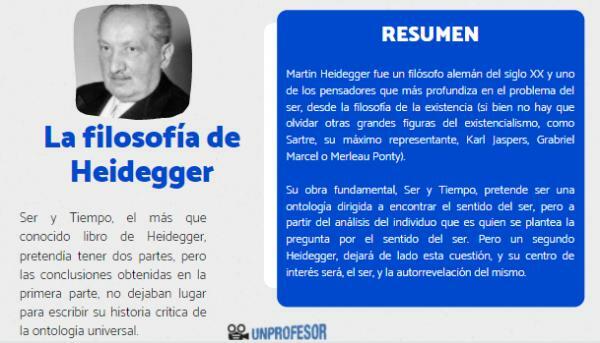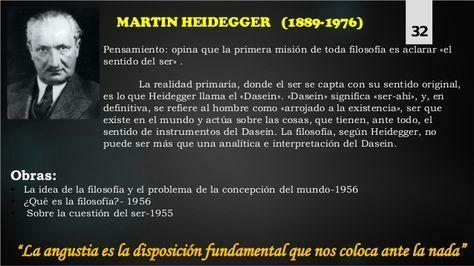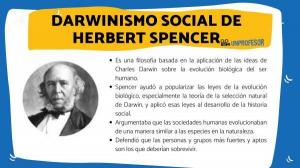The HEIDEGGER philosophy

In this lesson from a TEACHER we offer you a brief Summary of Martin Heidegger's Philosophy, German philosopher of the 20th century and one of the thinkers who delves most deeply into the problem of to be, from the philosophy of existenceAlthough we must not forget other great figures of existentialism, such as Sartre, his highest representative, Karl Jaspers, Grabriel Marcel or Merleau Ponty.
His fundamental work, Being and Time, pretends to be an ontology aimed at finding the sense of being, but from the analysis of the individual who is the one who asks the question about the meaning of being. But a second Heidegger, will put this question aside, and his center of interest will be, the to be, and the self-disclosure of the same. If you want to know more about Heidegger's philosophy, he keeps reading this lesson from a PROFESSOR.
Index
- The question of being in Being and Time, Heidegger's fundamental work
- The human being as being there
- The being-in and the being-with
- Being for death
The question of being in Being and Time, Heidegger's fundamental work.
To understand Heidegger's philosophy, a existentialist philosopher, it is important to know his works. Being and Time, Heidegger's more than well-known book, claimed to have two parts, but the conclusions obtained in the first part, left no room to write his critical history of universal ontology. This first part is divided into two sections: one dedicated to the analysis of the universal structure of Dasein and the other to the problem of temporality.
Section One: Dasein
This first section is directed to the study of the universal structure of the Dasein, the be-there or being in the world and makes an analysis of the be-in (in things) and the be-with (with the others). In both situations there is a concern, and this leads directly to the anguish. As a general rule, there is a “dropOf the human being in existence inauthentic, where the "is" commands (it is said, it is believed ...) and in this way, the individual finds himself as "thrown into the world”(Done) like anything else. Only the Dasein, which is the voice of conscience, can lead you to the authentic existence.
In the second section, he focuses on the problem of weather. According to this author, authentic existence is only possible, once the Dasein, in his anguish, he becomes aware of his temporality, that he is a be for death. Is temporality of which you speak Heidegger, is different from linear time. Likewise, he makes an analysis of the historicity, which introduces the past-present-future and is the very being of the Dasein.
The human being as being there.
Before doing an analysis of being, it will be necessary to analyze the entity, that is, the human being that is who questions the sense of being. The human being, like be there, it is thrown, situated, but it does not allow itself to be reduced to the notion of being. It should not be forgotten that Western philosophy identifies being with objectivity or with presence, in the words of Heidegger. But the individual finds that it is not just another thing. The human being is not a mere object, but he is, precisely, the entity for whom things are present.
The human being is a “be possible”, And that power, you have to update it, and therefore, you can choose yourself.

Image: Pinterest
Being-in and being-with.
The human being, the entity that questions the sense of being, is not a simple presence, one more thing, but his way of being is the existence. And this existence is understood as a possibility of being. That is, the human being is a project, so he can transcend and go beyond himself. The rest of the things in the world are only tools to be able to carry out his project.
The be in the world It consists in transforming the world into a project in an act of freedom. But this freedom is limited by the same tools (things) and by human needs. The world, then, is a means to an end.
In the same way that there is no object without a world, neither is there a self without the others. The human being is also a be with the others. Existence consists of open to the other selves, and this relationship, like the relationship it maintains with the world, must be one of careful. This care can be given in two ways: avoiding others worrying about taking care of themselves, or what is the same, be together, or, to help people to be free and take care of themselves, which is what it is called, coexist. The first case is that of authentic existence, and authentic in the case of the second.

Image: Pinterest
Being for death.
We continue to know the philosophy of Heidegger knowing the concept of "being for death." And it is that only when the human being realizes that he is a be for death, he reaches existence authentic. While he uses the world as an instrument and relates to others, he inevitably falls on the plane of facts.
Language tries to fill an existential void, being subjected to impersonality, it is said, which causes the fall into existence inauthentic. Because seeing himself as draftIt is understood as one more thing, because whatever you choose, it will always be what it is, a human being. The only one that can not choose is to die, that it is the only permanent possibility and that it prevents the realization of any project. Feel the anguish of being for death, it is the authentic existence.
Heidegger's final analysis does not reveal the meaning of being, but the nothingness of existence.
If you want to read more articles similar to Heidegger's philosophy: summary, we recommend that you enter our category of Philosophy.
Bibliography
Heidegger, M. Being and Time. Ed. Trotta. 2012



